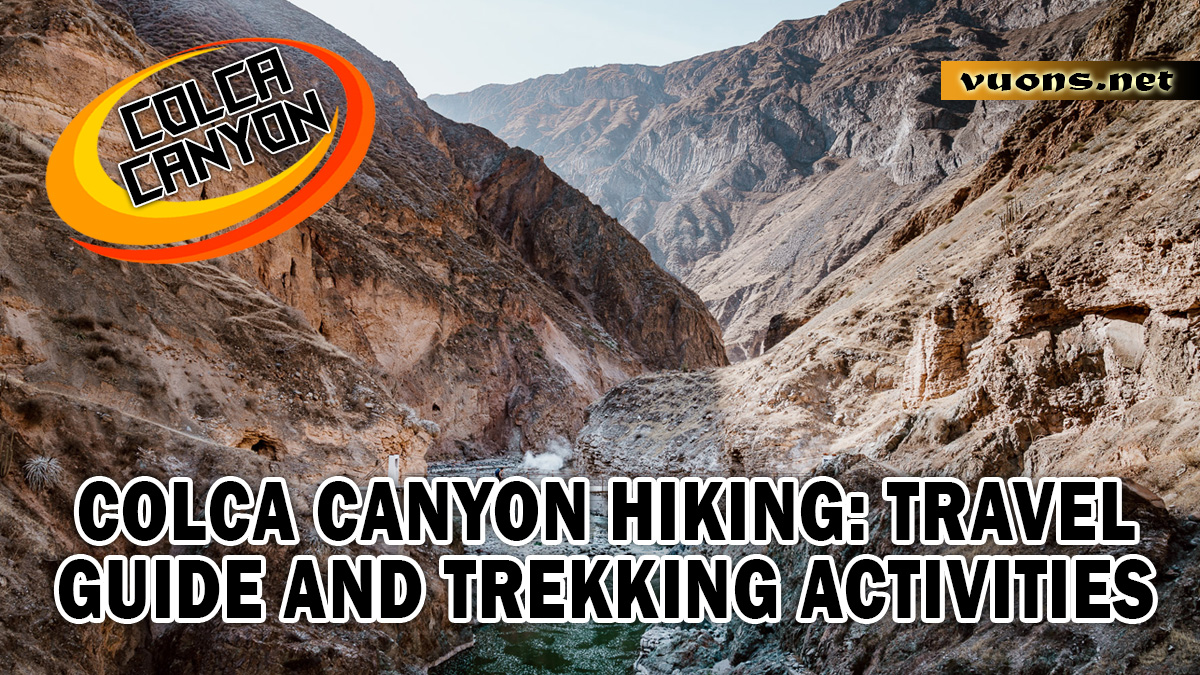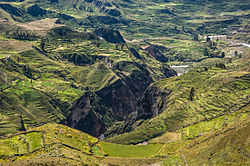Meet Colca Canyon: The Deepest Canyon in the World
Geographical Wonder of Colca Canyon: Its Depth and Beauty
Meet Colca Canyon: The Deepest Canyon in the World – Located in Peru, Colca Canyon is one of the deepest canyons in the world, even deeper than the Grand Canyon. With a depth of 3,270 meters, Colca Canyon offers stunning natural Scenery, making it a prime tourist destination for adventurers and nature lovers.
The canyon was formed through geological processes that took place over millions of years, influenced by volcanic activity and river erosion. Colca Canyon is not only famous for its depth, but also the natural beauty that surrounds it, such as steep cliffs, fast-flowing rivers, and lush green forests.
The uniqueness of Colca Canyon also lies in the diversity of its ecosystem. Throughout the canyon, visitors can find various species of flora and fauna, including the Andean condor, one of the largest birds in the world. This beautiful view is often the backdrop for tourists who come to enjoy this natural wonder.
Not only its beauty, the geographical wonder of Colca Canyon also creates challenges for hikers. Challenging trekking trails provide the opportunity to explore deeper, while enjoying the stunning panorama. The beauty of the canyon can be seen from several strategic vantage points, including Cruz del Condor, the best place to see condors soaring freely in the vast sky.
With all its beauty, Colca Canyon remains one of Peru’s must-see natural gems.
Colca Canyon Formation History: Amazing Natural Processes
Colca Canyon, located in southern Peru, has an incredible geological history. The formation of this canyon was influenced by natural processes that took place over millions of years. The main processes that formed Colca Canyon were volcanic activity and very strong river erosion.
Hundreds of millions of years ago, this area was part of a flatter area. Volcanic activity that occurred around the Andes produced layers of rock that were then lifted and formed high mountains. This volcanic process caused the formation of a very dramatic geological structure, with steep cliffs that divide the area.
The Colca River, which flows through the canyon, played a major role in the formation of Colca Canyon. Over thousands of years, the flow of this river eroded the hard rock at the bottom of the canyon, creating incredible depths. Continuous erosion by water and wind deepened the canyon, forming curves and cracks that make Colca Canyon one of the deepest canyons in the world.
During its formation, Colca Canyon also experienced climate changes that affected the development of the ecosystem around the canyon. The biodiversity that exists today, from flora to fauna, has developed in this area thanks to unique geological conditions and climate changes that have occurred over thousands of years.
The geological wonders of Colca Canyon continue to amaze scientists and visitors alike, providing insight into the forces of nature that shape the Earth’s landscape.
Colca Canyon Biodiversity: Wildlife in the Deepest Canyon
Colca Canyon, with its incredible depth, is not only a geological wonder, but also home to a variety of unique flora and fauna species. The diversity of ecosystems around the canyon makes it an interesting place to explore for nature lovers and animal observers.
The vegetation that grows along the canyon cliffs consists of various types of plants that are able to survive in extreme climates, from grasslands to subtropical forests. These plants not only create beautiful scenery, but also become a habitat for various types of birds, mammals, and insects.
One of the main attractions of Colca Canyon is the presence of the Andean condor, one of the largest flying birds in the world. With a wingspan of up to 3 meters, this condor is often seen soaring above the canyon, providing a spectacular view. In addition to condors, the canyon is also home to various other species of birds of prey, such as eagles and owls.
Not only birds, Colca Canyon is also inhabited by small mammals such as rabbits, guanacos, and mice that live in the harsh environment. At the bottom of the canyon, there is a river that is a source of life for various types of freshwater fish.
The wildlife in Colca Canyon shows how these species adapt to extreme natural conditions, making it a perfect example of nature’s resilience in the face of change.
Exploring Traditional Villages Around Colca Canyon
Around Colca Canyon, there are several charming traditional villages that preserve the culture and lifestyle of the Andean people that have been around for centuries. These villages offer the opportunity to immerse yourself in the daily life of the locals and enjoy the incredible natural scenery.
Villages such as Chivay and Cabanaconde are the main gateways to Colca Canyon. Chivay, located at the top of the valley, is known for its traditional market, where visitors can find a variety of local products such as alpaca wool, handicrafts and typical foods. The village also offers natural hot springs that are ideal for relaxing after a long hike.
Cabanaconde, located closer to the bottom of the canyon, offers a more authentic experience. The village is surrounded by rice fields and agricultural terraces that have existed since pre-Inca times. The locals, who are mostly of Quechua descent, still practice traditional farming methods using simple tools. Visitors can interact directly with the villagers and see how they manage their lives in close connection with nature.
Visiting these villages provides insight into how Andean people maintain their traditions despite living in a remote and challenging environment. Through interaction with local people, visitors not only enjoy the beautiful scenery of Colca Canyon, but also experience the depth of culture that has grown up around this stunning canyon.




